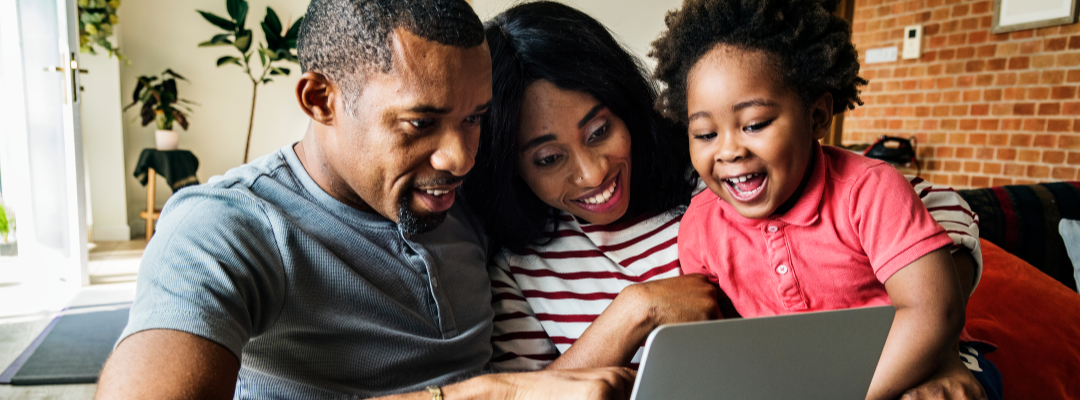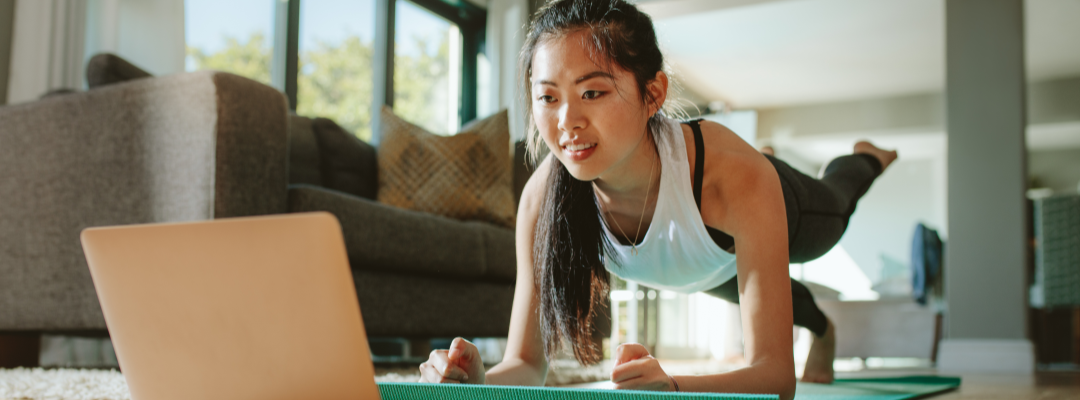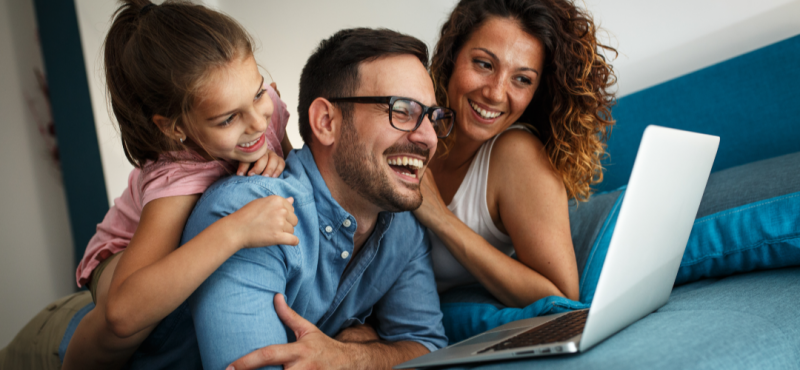As states throughout the U.S. enter into their eighth week of shelter-in-place, the challenge of keeping ourselves centered and productive increases. To combat the negative effects of isolation, people are finding creative ways to stay fit, stimulate their minds and, most of all, stay connected. In the process, our use of broadband is evolving in ways we might not have thought possible just a short time ago. Here are three ways that people are leveraging broadband to stay sane and connected:

1. Keeping Kids Busy
Lockdown has been particularly hard on children, who have been unable to play with friends, go to school, or participate in their usual activities. Fortunately, some good, old-fashioned ingenuity has come to the rescue. When Sarah Strachan Gibbs, in Seattle, WA, noticed her young daughter was having trouble connecting with her best friend on Zoom, for example, she suggested a variation of hide-and-seek, where each girl took turns hiding an item in the background of the room for the other to find. “This was definitely a lot easier for her to relax into than just staring at the screen and trying to have a normal conversation,” Gibbs notes.
Ingenuity has also been supplemented by online content – much of it provided for free by authors and celebrities. Stuck at home in Alexandria, VA, Maggie Bennett and her eight-year-old daughter enjoy a variety of new online activities and outreach for children, including Carson Ellis’ Quarantine Art Club, Mo Willem’s Lunch Doodle series, and Mac Barnett’s Book Club Show story sessions. “They help us feel connected and keep the imagination wheels turning,” Bennett says. “It’s wonderful that so many figures in the children’s book world have come up with creative ways to connect with children!”
For Anouk Savineau’s two children, in Washington, DC, dance lessons and soccer practice have moved online, with teachers and coaches guiding the kids through choreographies and drills. “Both kids look forward to the classes. It gets them moving and keeps them connected to their friends and favorite activities,” says Savineau. While a screen is not a permanent replacement for dancing or soccer practice, during the pandemic broadband is allowing children to laugh and learn with friends, trusted teachers, and some of the nation’s finest artists and entertainers – without leaving home.

2. Keeping the Beat
Music unites cultures – and people. But with bars and clubs closed due to the pandemic, a new phenomenon is surging: online dance parties. In addition to keeping people moving, these parties have been an important way for venues to raise funds to survive the lockdown period.
“DJs can create atmospheres and perform sets online where their music-hungry friends can tune in,” says Shane Delinks, of New Haven, CT. “Social media has played a big role in finding out about these events. A DJ will announce a party coming up, and invite friends, who will in turn invite more friends to tune into the broadcast.” As a DJ himself, Delinks is now planning on hosting his first online party. “There is much talk online about how this will shape the dance music culture,” he says. “Will it allow more people to perform and tune in when we are no longer restricted to venues? Will more venues stream live from the event, once back in clubs and arenas? My feeling is yes.”

3. Keeping Team Spirit Alive
For many, playing sports goes way beyond fitness, with teams becoming a close-knit family. When teams are unable to meet, the loss feels like a mourning. For Karen Cynn, a member of the Los Angeles roller-derby team “Road Ragers,” the challenge has been to maintain togetherness through remote events and gatherings such as Zoom workouts and virtual happy hours. “It has not been a replacement to playing and having fun together in person, but it definitely helps with isolation people may have and the disappointment of not being able to skate,” says Cynn.
When COVID canceled the World Junior championships for ultimate frisbee, sixteen-year-old player Lia Schwartz, from Washington, DC, poured her energy into creating Ultimately Together, a website designed to support young players by offering things like drills to do on your own, safety tips, and pages for college teams to promote their programs. “This is a confusing and often overwhelming time to be in,” Schwartz says, “and we hope to create a support system for gxrls [spelt with an “x” to be inclusive to non-binary members] to let them know that they are not alone.” While nothing can replace the physical kinship of sports, broadband connectivity has made it possible to stay connected and together – online.
From dance lessons to DJs, drawing with the pros to roller derby, broadband is both keeping us connected and providing the possibility for that connection to broaden and deepen. As we move forward to a future of higher speeds and greater capacity, we will be able to adapt the innovations we’ve learned during the crisis to our post-pandemic lives, enriching them in turn.
